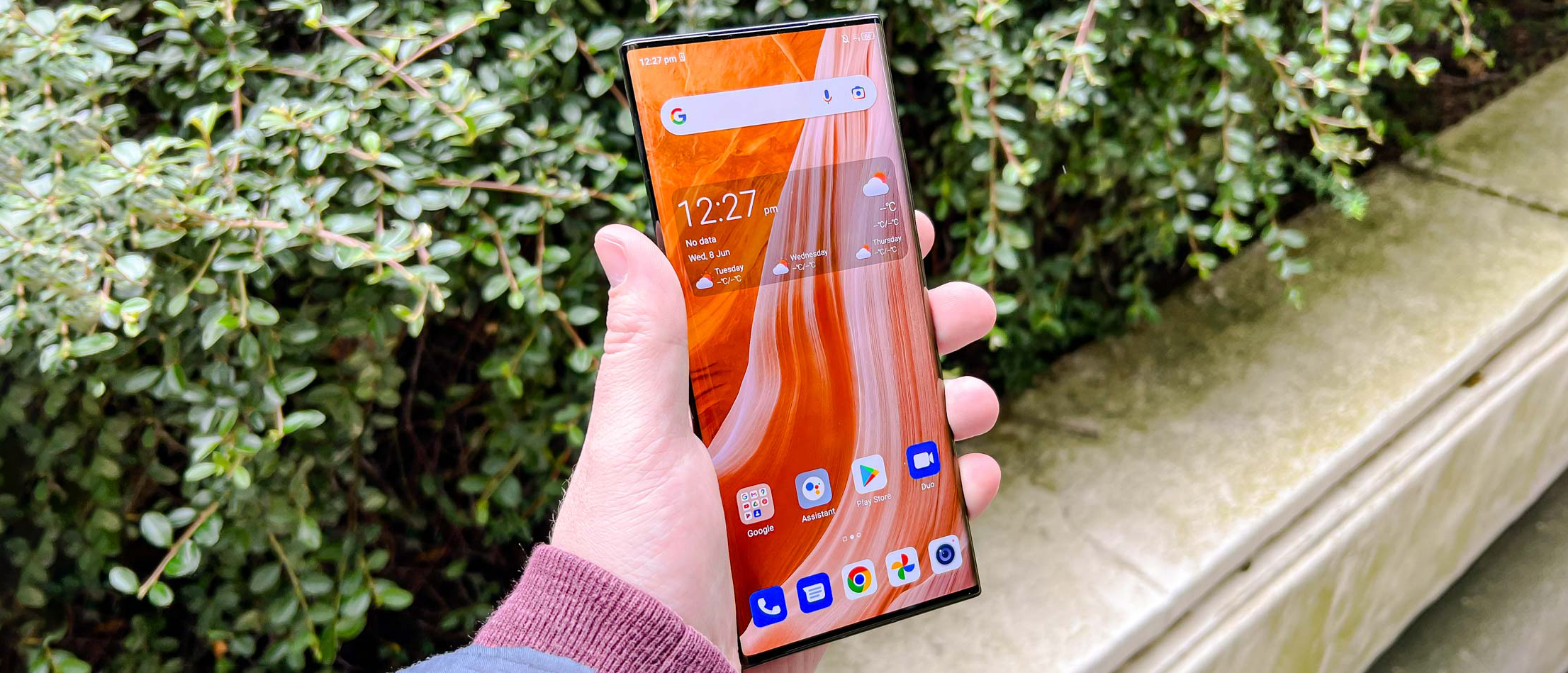Tom's Guide Verdict
The ZTE Axon 40 Ultra can hold its own against the Galaxy S22 and Pixel 6 when it comes to price, display and rear cameras. The under-display camera needs work, but overall the ZTE Axon 40 Ultra is a compelling flagship alternative
Pros
- +
Great price
- +
Unique and powerful cameras
- +
Vivid screen with under-display camera
- +
65W fast charging
Cons
- -
Under display photos are poor quality
Why you can trust Tom's Guide
Starting price: $799/£709
Display: 6.8-inch FHD+ AMOLED (2,480 x 1116)
Refresh rate: 120Hz
Rear cameras: 64MP main (f/1.6), 64MP ultrawide (f/2.35), 64MP 5.7x optical zoom (f/3.5)
Front cameras: 16MP (under-display)
Chipset: Snapdragon 8 Gen 1
RAM: 8GB/12GB
Storage: 128GB/256GB
Battery: 5,000 mAh
Charging: 65W wired
Software: Android 12 with MyOS 12
Size: 6.4 x 2.9 x 0.33 inches (163.3 × 73.6 × 8.41mm)
Weight: 7.2 ounces (204g)
With the ZTE Axon 40 Ultra, the Chinese phone maker has finally broken through the final barrier keeping it out of the exclusive flagship Android phone club. I still don't think it's going to replace Samsung, Google or OnePlus as an overall best Android phones pick, but the Axon 40 Ultra certainly belongs in the conversation.
The Axon 40 Ultra isn’t as ultra as some similarly named phones — don’t confuse this with Samsung’s Galaxy S22 Ultra — but it’s not really aiming to be with such a low price. Instead, think of the Axon 40 Ultra as more of a base model flagship like the Galaxy S22 or iPhone 13 — but one that makes Apple and Samsung look stingy thanks to powerful features like 64MP triple cameras and 65W charging.
ZTE also offers a feature none of its rivals can: an under-display selfie camera. But that camera turns out to be both a blessing and a curse. While you enjoy an uninterrupted 6.7-inch display, you also sacrificing a lot of photo quality. You'll have to accept you'll look fuzzy in your selfies and video calls, plus deal with some slightly questionable translations in the MyOS software if you decide to buy the Axon 40 Ultra.
By the end of this ZTE Axon 40 Ultra review, you'll see why we have some reservations about the phone. However you'll also learn just how good a lot of this phone is, and why it may be worth taking a chance on.
ZTE Axon 40 Ultra review: Price and availability
The Axon 40 Ultra will go on sale with a starting price $799/£709. If you're interested, you can pick one up from ZTE's own website on July 21 both in the U.S. and the U.K., but if you go to the page now, you can buy a voucher for $2/£2 that saves you $50/£40 at checkout when the phone goes on sale properly.
At this price level, the Axon 40 Ultra isn't competing with other "ultra" phones but with base model flagship phones like the Galaxy S22, Google Pixel 6 or iPhone 13. But as you'll see in this review, ZTE still offers some features that even its most expensive rivals can't match.
ZTE Axon 40 Ultra review: Design and display
After some clumsy-looking designs with previous ZTE Axon models, the Axon 40 Ultra has fallen in line with the flagship Android herd. The matte-textured back with its large rectangular camera block looks very smart, reminiscent of older Samsung phones. It's just a shame you can only buy ZTE’s phone in black, as I'm sure this design would look great in some brighter hues too.
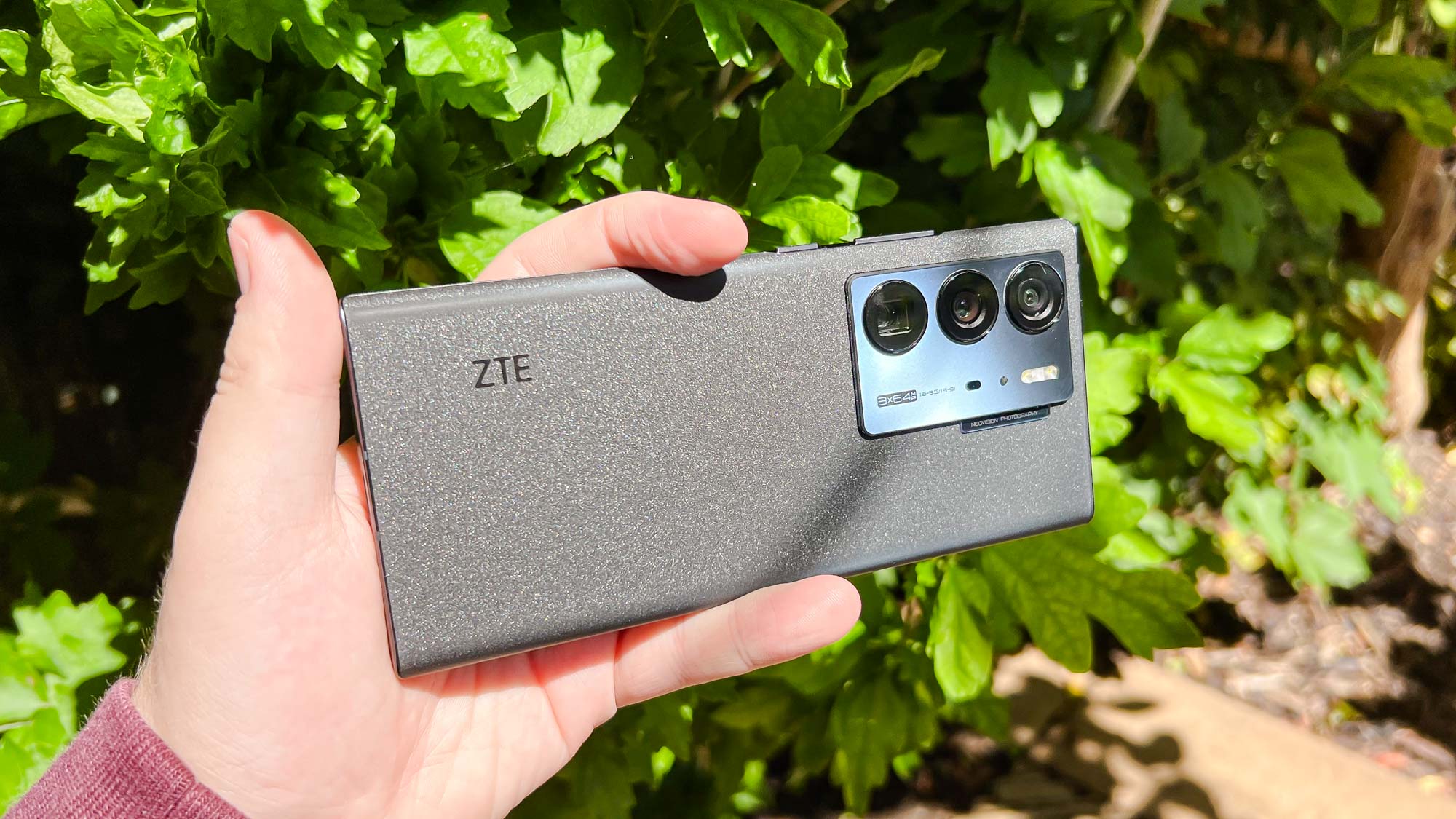
The front of the phone looks plain, but that's only because the selfie camera is invisible beneath the display. The curved sides look more interesting, bending at a more extreme angle than other curved display phones like the Galaxy S22 Ultra for a dramatic side profile.
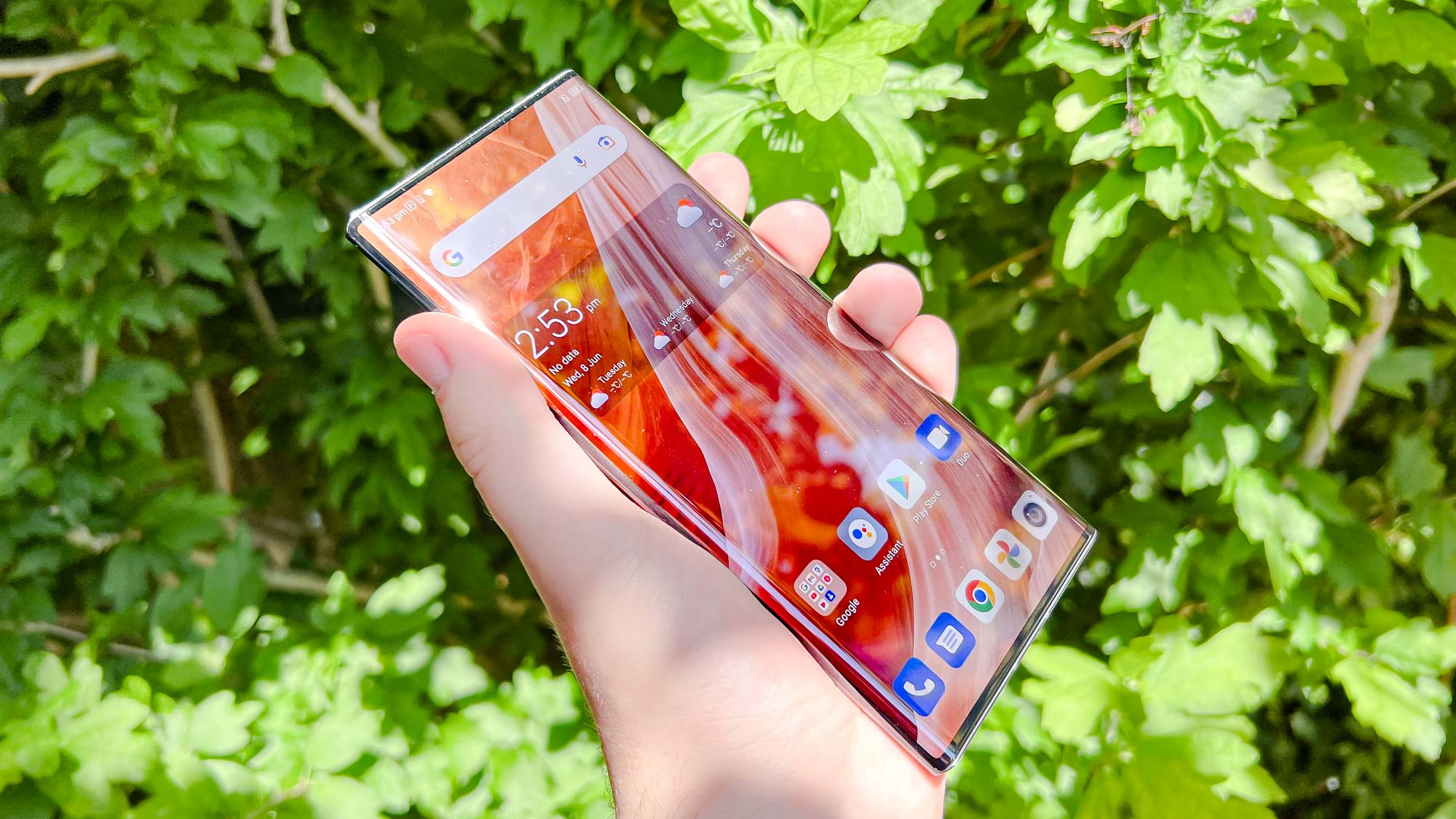
The overall size of the phone is quite compact. ZTE made the Axon 40 Ultra smaller and lighter than the Pixel 6 Pro and iPhone 13 Pro Max while still offering the same sized 6.7-inch display. If you want a big phone but want it to take up as little room as possible, this could be your best bet besides spending a lot more for a foldable.
The 6.8-inch FHD+ AMOLED follows the Axon 40 Ultra's dramatically curved edges, spilling further over than the S22 Ultra's panel. The mistouch prevention isn't perfect though, which is a common complaint about curved displays but not usually one I find trouble with.
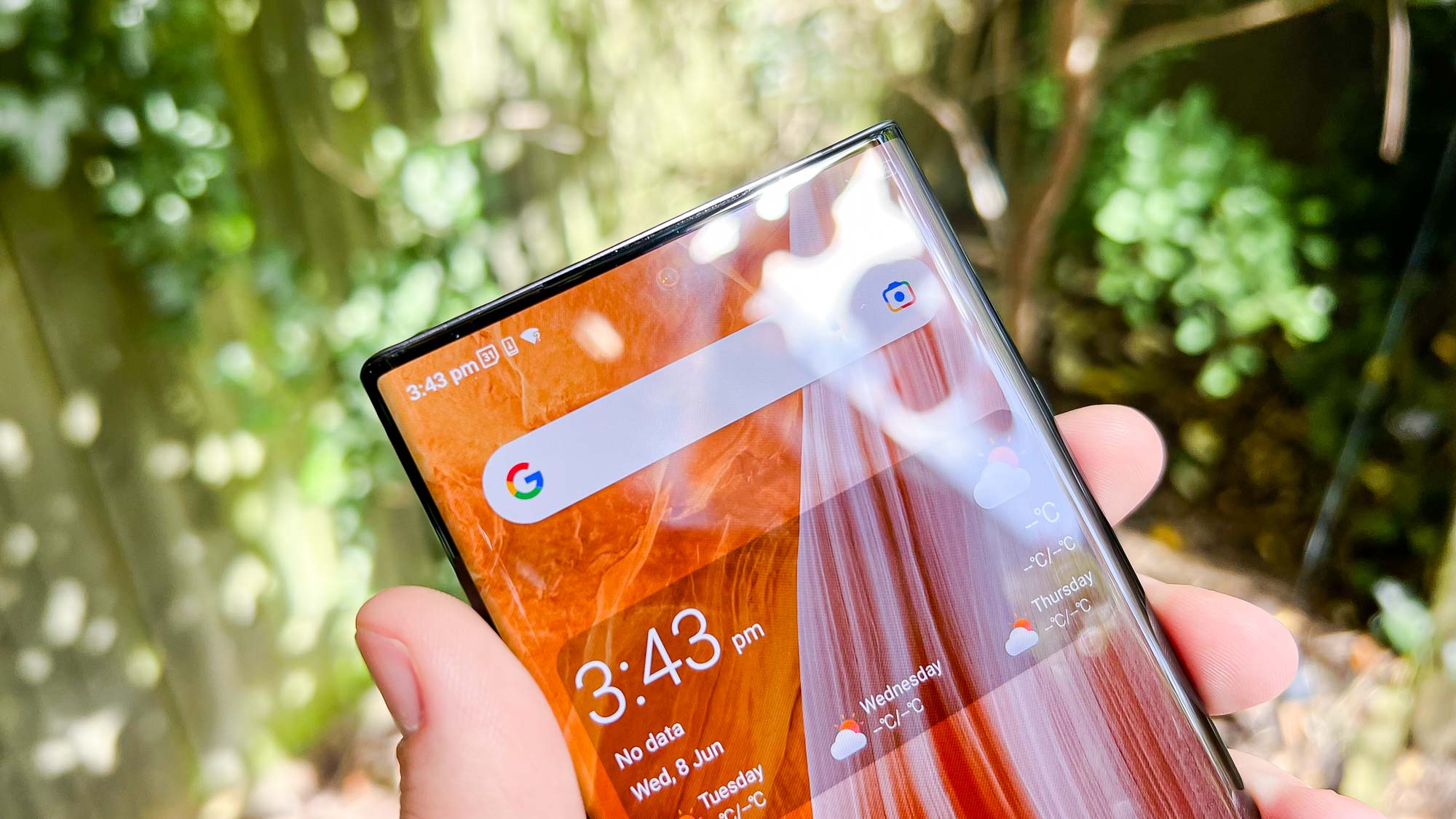
Previous Axons with under-display cameras have had their displays ruined by having an obvious low-resolution area of the screen where the camera looks out. But this is something the Axon 40 Ultra gets spot on.
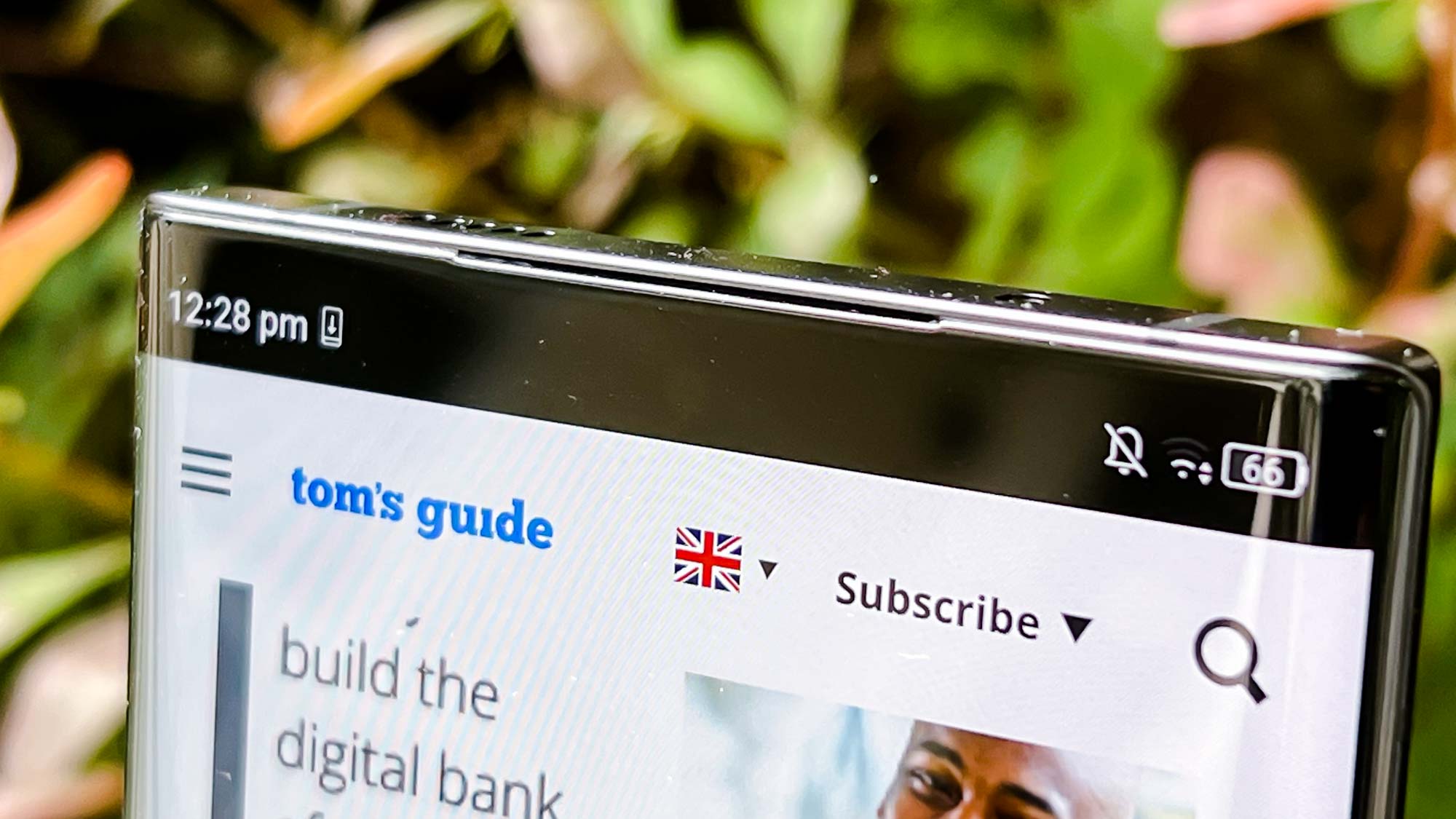
Watching the trailer for Matilda The Musical and looking specifically at the under-display camera area with the video zoomed in to fill the display, there's no visible difference between the regular screen and the part hiding the camera. In fact, with all the dancing and camera movement in the trailer, I'd often get distracted and struggle to find the spot I was meant to be looking at again, which seems to be a great sign that the illusion is seamless.
ZTE Axon 40 Ultra review: Under-display camera
The Axon 40 Ultra's signature ability is its hidden selfie camera, now on its third generation. The good news is the camera is better than ever. But sadly, photo quality remains an issue with this signature camera.
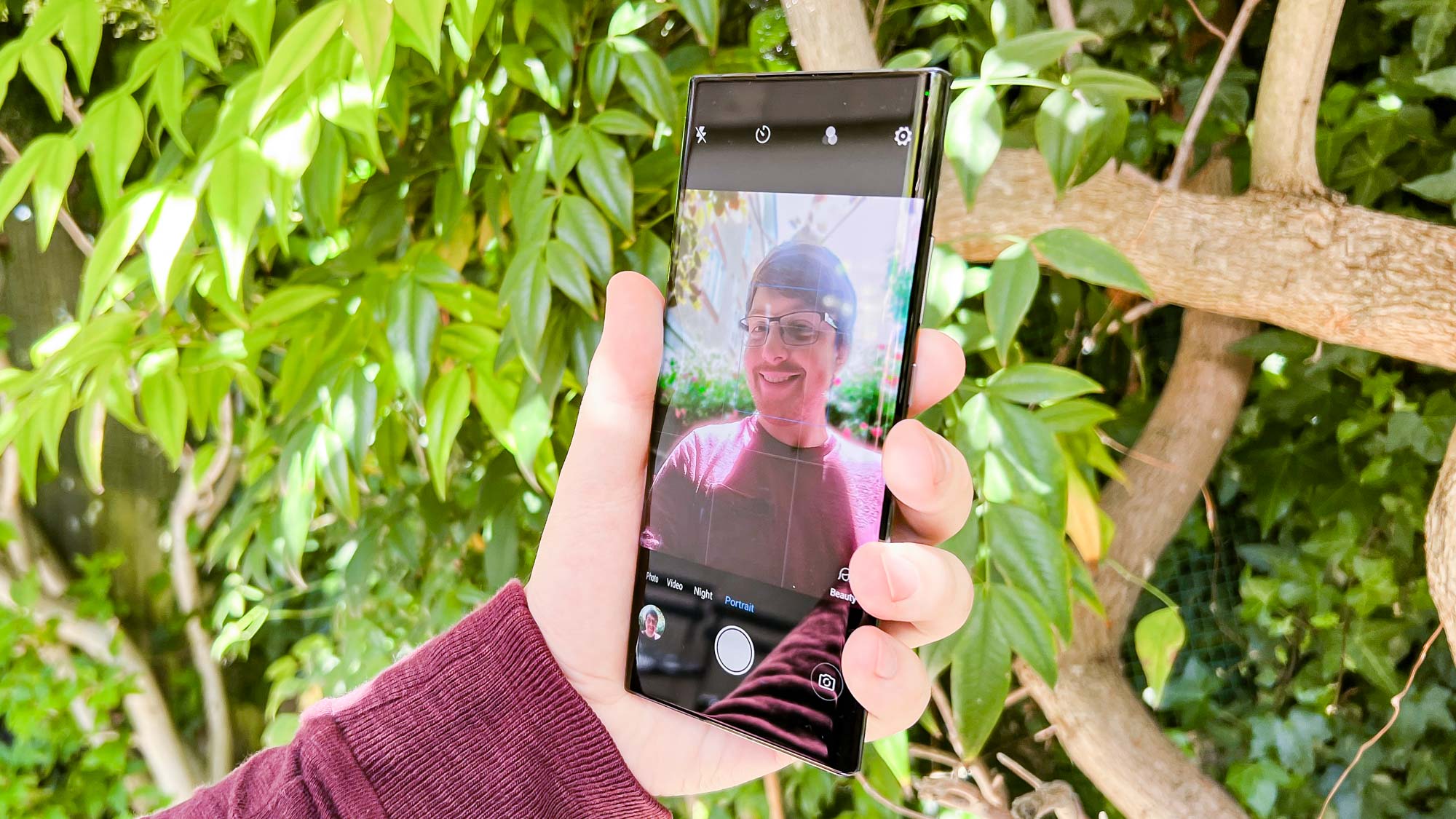
Unlike the Axon 30, it's really hard to find the sensor unless you've got the phone under very bright light. ZTE's done a great job upping the pixel density of the disappearing display over the camera, meaning it's basically impossible to see any difference in the screen during regular usage.
Taking photos with this camera is still a disappointment however. As you can see in this comparison with the iPhone 13 Pro Max, the ZTE's image is incredibly soft, even if the coloration looks fine overall.
It's even worse when you add more light. While the below portrait shot taken on the Galaxy S22 Ultra isn't the best I've seen Samsung’s phone produce, the Axon 40's shot is completely blown out, losing a lot of detail in the leaves behind me and giving me an unpleasant fuchsia complexion.
This really puts the Axon 40 Ultra at a disadvantage compared to the phones it's trying to compete with. Gaming phones like the RedMagic 7 Pro can get away with sub-par under-display photography due to a focus on mobile gaming features, but the Axon 40 Ultra doesn’t have that luxury.
ZTE Axon 40 Ultra review: Rear cameras
While the under-display selfie camera lets the Axon 40 Ultra down, the phone’s other cameras are rather good. At your disposal, you have a trio of rear 64MP sensors for main, ultra-wide and 5.7x optical telephoto shooters on the back of the phone, but they don't behave quite like you'd expect
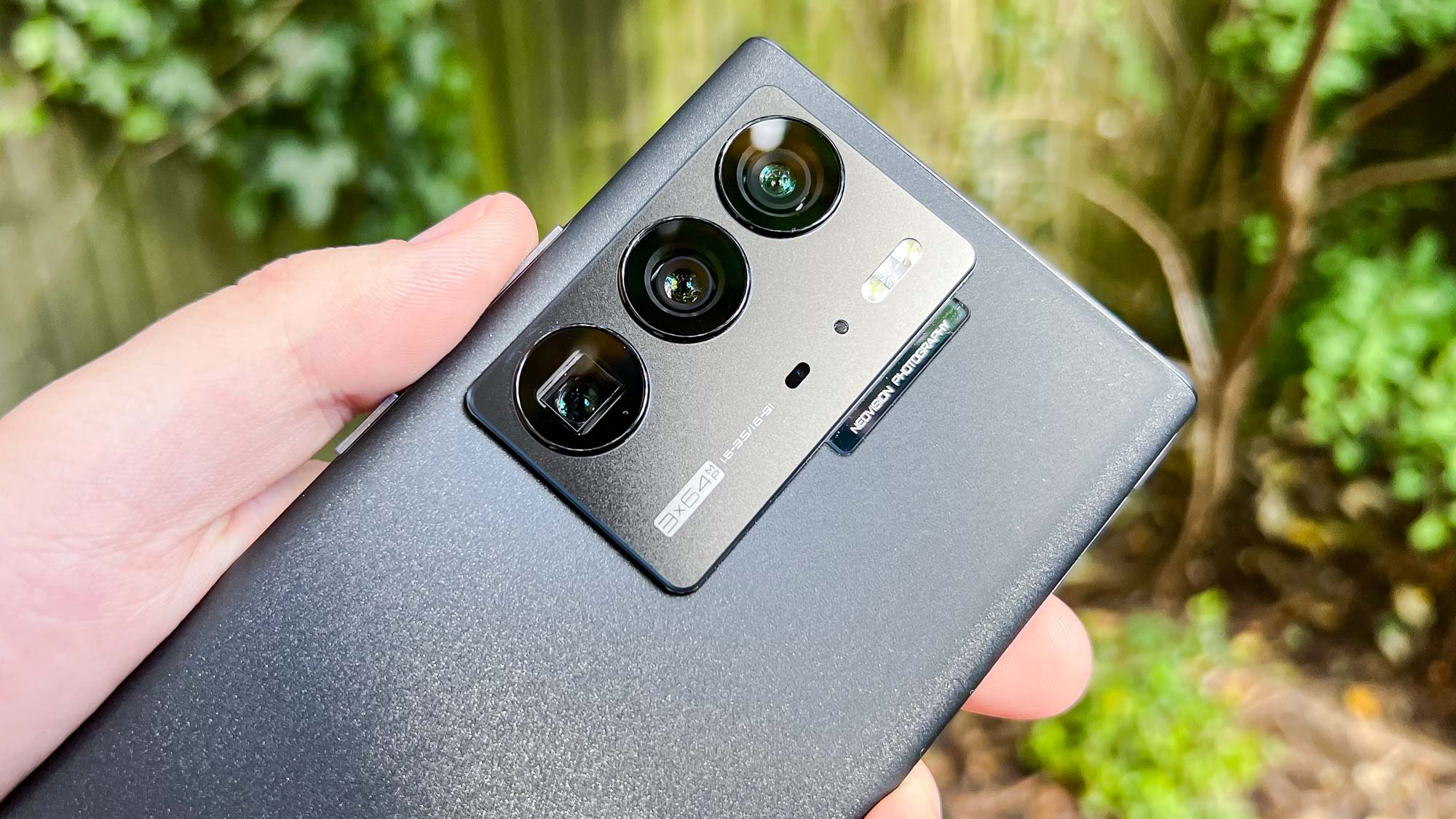
Due to ZTE trying to match a traditional film photography experience, every shot is, by default, zoomed in much tighter than on comparable phones. In some situations, it’s good because you can get closer to your subject without moving in. At the same time, that means you will need to take some steps back sometimes to fit everything in frame.
Take a look at this photo of a signpost at Druridge Bay in Northumberland, England. These are taken on the Axon 40 Ultra and iPhone 13 Pro Max's main cameras, but just looking at it you'd assume the ZTE was using zoom.
In terms of characteristics, the ZTE's image is a bit cooler than the iPhone's. It's a bit more detailed too, which makes sense given the higher resolution sensors on the Axon.
We can see this again in this image of a phonebox near Edgware Road, taken alongside one from the Galaxy S22 Ultra. The phonebox looks much larger and closer, despite being taken from exactly the same position. We can also see here some extra color saturation in the S22 shot, a trademark of Samsung photography.
In an ultrawide shot of Morpeth train station, we again see how the ZTE's shot is quite tight in comparison to the iPhone. It's quite a lot brighter though, which helps show off just how sunny the day was when I took it.
Finally, let's take a look at a telephoto shot.
Looking past the ZTE's compressed shot of the barbican of Alnwick Castle, we again see the ZTE offers additional brightness, helping draw the detail out of the darker colored bricks and the statues on top of the crenellations.
ZTE Axon 40 Ultra: Other features
The cameras and display highlight the ZTE Axon 40 Ultra, but there are a few other features worth your attention.
Performance and 5G: We can see how the Axon 40 Ultra, with its Snapdragon 8 Gen 1 chipset and 8GB RAM (in the base model) performed when compared to the iPhone 13 Pro Max, the Google Pixel 6 Pro and the Galaxy S22 Ultra.
| Row 0 - Cell 0 | ZTE Axon 40 Ultra | Samsung Galaxy S22 Ultra | Google Pixel 6 Pro | iPhone 13 Pro Max |
| Geekbench 5 (single core/multicore) | 1,205/3,283 | 1,240/3,392 | 1,027/2,760 | 1,720/4,549 |
| 3DMark Wild Life Unlimited (score/FPS) | 9,892/59.3 | 9,499/56.9 | 6,682/40.0 | 11,418/68.4 |
| 3DMark Wild Life Extreme Unlimited (score/FPS) | 2,230/13.3 | 2,346/14.0 | 1,832/10.9 | 2,584/15.5 |
| Adobe Premiere Rush (mins:secs) | 0:46 | 0:47 | 0:48 | 0:25 |
Perhaps the 12GB version would have done better in some of these tests, but the 8GB Axon is in close competition with the Exynos 2200 chip in the S22 Ultra across all tests — remember, Samsung uses its own Exynoss chip for S22 models sold in Europe. The Axon 40 Ultra thoroughly defeats the Pixel 6 Pro, even if it can't match the iPhone 13 Pro Max’s best-in-class performance.
Playing Grid Autosport on the Axon 40 Ultra, I definitely noticed better performance than when running the game on the Exynos-powered Galaxy S22 Ultra. ZTE’s phone delivered enhanced graphics and lighting while still playing smoothly.
5G: The good news is the Axon 40 Ultra offers sub6GHz 5G globally. That's good news for the U.K. market, but unfortunately for U.S. users there's no mmWave support. If you covet the fastest possible 5G speeds around, you'll need to look at other phones.
Battery and charging: You get a 65W charger in the box with the Axon 40 Ultra, and it'll charge the Axon 40 Ultra's 5,000 mAh battery to 46% in 15 minutes and to 100% in 43 minutes. That's not the fastest charging phone we've seen but it's certainly still quick.
In a makeshift battery test— we’ll get the ZTE Axon 40 Ultra into our lab for our official battery test soon — I found that 2 hours of YouTube over Wi-Fi drained about 10% of the ZTE's battery. That's a little quick for my liking, but it still indicates a day's worth of medium to heavy use is well within the ZTE's abilities.
Software: A historic weakness among ZTE phones is poorly translated menus, which can make finding the options you’re looking for needlessly tricky. However after sifting through the Axon 40 Ultra’s menus, I'm satisfied that this problem's no longer here with the Android 12-based MyOS12.
That said, there are still some weird formatting and lower-case letters where you'd expect capitals, making the software still feel a bit undercooked.
ZTE Axon 40 Ultra review: Verdict
If it didn't have the under-display camera, the Axon 40 Ultra would be easy to confidently back as a flagship alternative for users who didn't want just another Samsung Galaxy or Google Pixel. But since it does have that unusual selfie shooter, it makes judging the phone's overall quality and ideal buyer tricky.
The low price of the ZTE Axon 40 Ultra makes it easy to choose if your budget can't stretch to a Galaxy S22 Ultra, thanks to the Axon’s 64MP cameras and 65W charging. But the front camera can be very important to users for selfies or video calls, so the quality of the under-display camera could be a deal breaker, even at this price.
I'd recommend the Axon 40 Ultra to anyone who wants the maximum amount of phone for less than $800 and feels like the similarly priced iPhone 13 or Galaxy S22 don’t offer quite enough. If you're prepared to spend the money needed to get a Samsung Galaxy S22 Ultra or iPhone 13 Pro Max, you're probably going to get a better-rounded experience with those phones.
If you're determined to stick to a £700 - £800 budget though, the most interesting comparison for the Axon 40 Ultra is against the Google Pixel 6 Pro. Google’s phone lacks some of the Axon 40's processing power and battery longevity and its camera hardware front and back isn't quite as impressive on paper. But the software experience is excellent, and the photos still turn out brilliantly as a result.
That we’re at least comparing the ZTE Axon 40 Ultra to these top smartphones bodes well for ZTE’s phone-making prowess. Now if only the company could take the next step by fixing its flawed under-display camera, we’d be getting somewhere.

Richard is based in London, covering news, reviews and how-tos for phones, tablets, gaming, and whatever else people need advice on. Following on from his MA in Magazine Journalism at the University of Sheffield, he's also written for WIRED U.K., The Register and Creative Bloq. When not at work, he's likely thinking about how to brew the perfect cup of specialty coffee.
